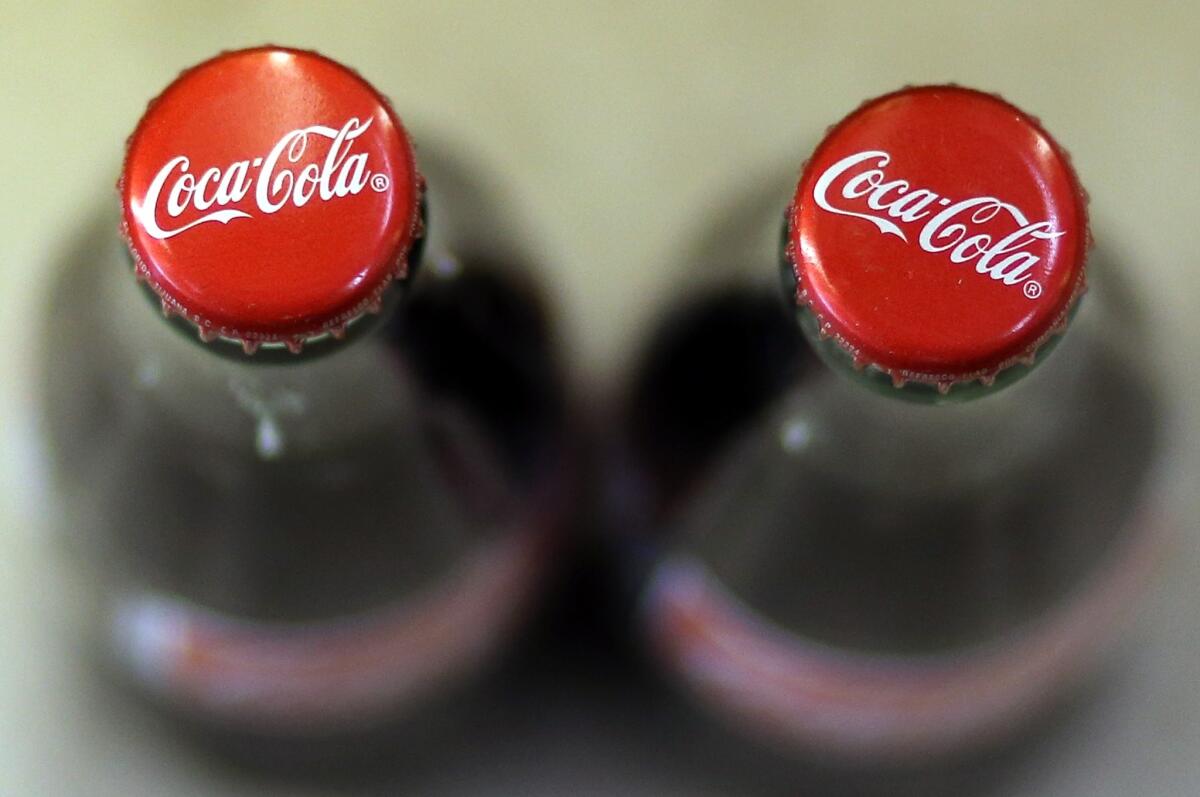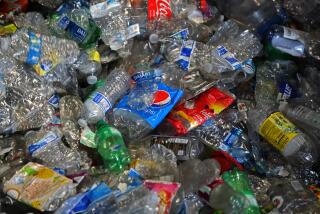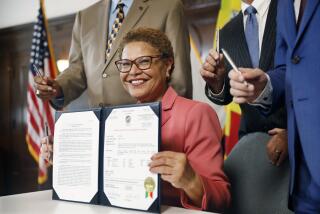Opinion: Why is Mayor Garcetti polishing the soda industry’s image?

To hear Los Angeles Mayor Eric Garcetti’s office tell it, the city is being honored with a wonderful new health initiative brought to it by the soda industry. The details are unclear from the press release but this is all part of the Alliance for a Healthier Generation, an alliance that former President Clinton built with the food industry to persuade it to take steps toward providing healthier food. Its steps so far have been considered modest at best.
“I’m thrilled that Los Angeles was chosen as one of the pilot cities for Alliance for a Healthier Generation initiative and look forward to working with President Clinton, AHG and the American Beverage Association to set the agenda locally,” the mayor said in the press release.
How about if we don’t let the purveyors of high-calorie junk drinks have anything to do with setting the health agenda in L.A.? Public health advocates see this new push as unlikely to make any difference, except perhaps to give the beverage industry more reason to push other profitable products such as sports drinks (lower in sugar but high in salt) and sodas in smaller cans. Marketing these other products is a major part of the plan, according to the association press release. A more useful aspect: posting calorie counts on vending machines.
The goal is to reduce calories from beverage consumption by 20% within 10 years.
Which is not a lot.
Remember, they’re not talking about reducing total calories by 20%, or even calories from sugar, because people still eat cookies, ice cream and many other treats. Just the segment from sweetened beverages. If the industry “succeeds,” Americans would still be consuming far more sugar than recommended.
But consider this: Sugared soda consumption has been falling by 2% a year all on its own, as people start realizing just how bad this stuff is for them in large doses. Compounding that 2% year by year, that would actually amount to more than a 20% reduction within 10 years, without the beverage industry. But it would give the soda makers a way to laud their initiative as successful, and themselves as guardians of public health. You’ve heard of greenwashing? Think of this as healthwashing.
I’m not buying it.
The question is, why is Garcetti?
The initiative by itself probably doesn’t make things worse -- unless it leads others to slack off on the much bigger push it will take to make people think of sodas as an occasional treat, not a valid method of daily hydration. Here’s a way the beverage association could help: Sponsor the construction of readily available, well-maintained public water fountains, and reusable water bottles. Smaller cans of soda? They already exist, but they usually cost more than the bigger 12-ounce cans.
The beverage association’s new marketing plan could also give the industry a way to fight back at the soda taxes and other restrictions on sodas that some municipalities have proposed. We’re great corporate citizens, the industry could argue. Look how hard we’re trying to reduce consumption of calories from soft drinks.
The industry benefits from its alliance with Clinton, the popular former president. Clinton might mean well, but this kind of initiative is not leading the way to better health; it’s lagging it. Harold Goldstein, executive director of the California Center for Public Health Advocacy, says it’s like the 2006 agreement Clinton’s Alliance negotiated with the soda industry not to sell its highest-calorie drinks at public schools. By that time, California had led the way by banning the sale of sodas in schools, Goldstein said, and 14 other states had followed suit. The movement was gaining momentum; the sodas were on their way out, anyway, but the soda industry got to look like a child-centered good citizen.
Except that’s not how I remember what the industry was doing in schools during the late 1990s and first years of this century. Companies would pay schools to sell only their brands, “branding” the kids for future consumption. In Georgia, two students were suspended in 1997. Their terrible act? Drugs? Fighting? No, they wore Pepsi T-shirts to protest the promotion the school had arranged through an agreement with Coca-Cola: “Coke in Education Day,” with all the kids instructed to wear the Coke shirts they’d been provided.
Follow the Opinion section on Twitter @latimesopinion
More to Read
Start your day right
Sign up for Essential California for news, features and recommendations from the L.A. Times and beyond in your inbox six days a week.
You may occasionally receive promotional content from the Los Angeles Times.







